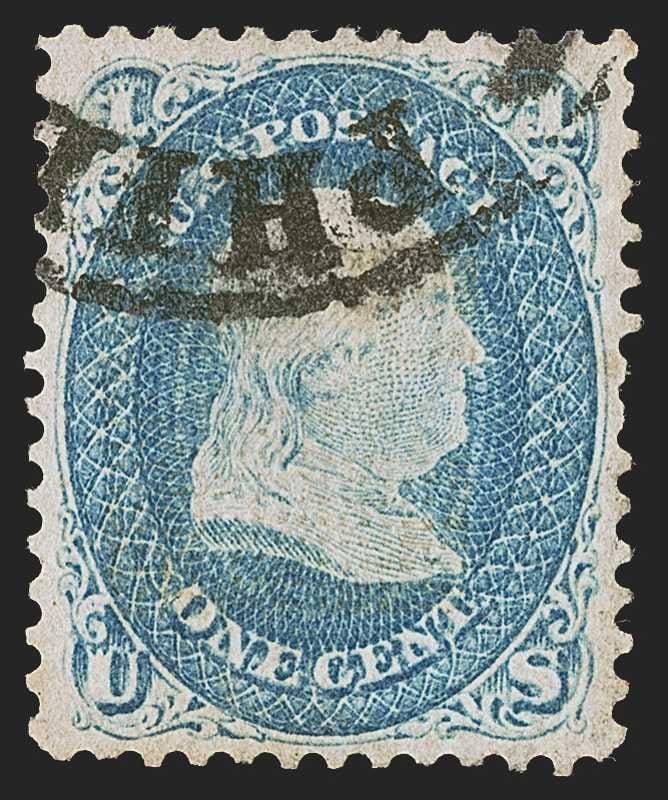Major stamp auctions are stellar events and none more so than the June 14-15 sale in New York of the key items from the Bill Gross collection, the most complete of United States postage stamp collection ever put together. Over two days some $19.2 million was bid for 317 items at this Robert A Siegel Auction in New York city.
The sale’s premier item was an 1868 Benjamin Franklin stamp of a variety for which only 2 known examples exist. It sold for $4.3 million which is the highest price ever paid for a US stamp. The second most valuable item was an Abraham Lincoln stamp which sold for $2.8 million and was also one of only 2 known. Of the two stamps, the Lincoln stamp proved to have been the better investment, purchased in 1986 for $190,000 versus the cost of the Franklin stamp for which Mr. Gross traded the plate block of the inverted Jenny in 2005, which cost him $2.97 million. While the Franklin stamp may have realized a lesser paper profit, it garnered the Gross collection significant publicity since it was the last stamp he needed to give it the stature as the most complete US collection ever. While he made less than a 2% annual return on the investment in the Franklin stamp, it enhanced the provenance of his entire collection and arguably contributed to the stellar auction results.
Bill Gross is a class act in philately and has been broadly accepted by the collecting community despite his financial focus on stamp values. While his career in asset management garnered him the moniker “bond king”, his role in postage stamps as a collector, investor and a stamp donor of millions of dollars to charity from stamp sales has made him the “Stamp King” as well.
Note, the catalog for this auction is itself a memorable and valuable resource which can be downloaded at the Siegel website. It is a fine display of the importance and definition of provenance in stamp investing and is worth studying by investors and collectors. Also note that there were dozens of stamps in this auction which went for prices below $1,000. A small price to pay to own an item with such provenance. It might even dress up the value of your collection to have an item or two from such an auction in your collection when you sell it. I remember well when FDR’s stamp collection was sold in album pages lots with each page clearly stamped with its provenance. Provenance comes in many forms.
Read the full article here
















